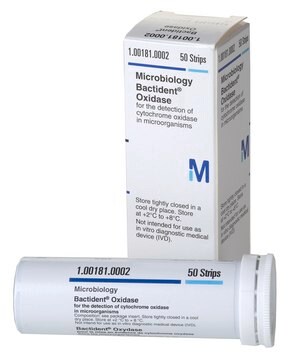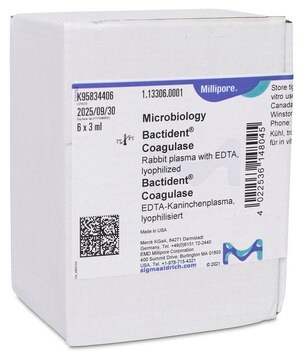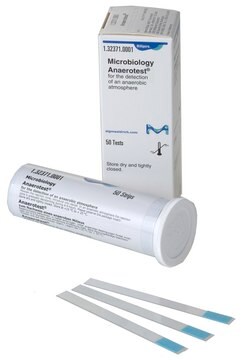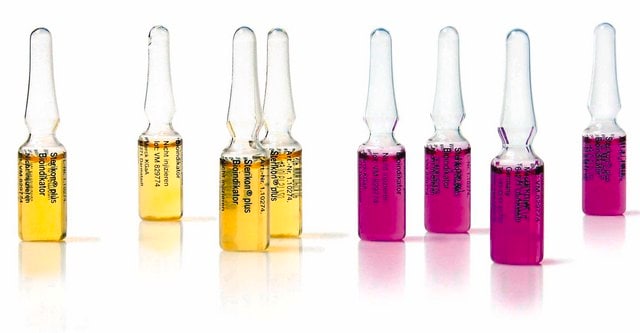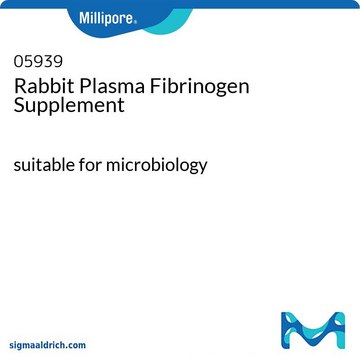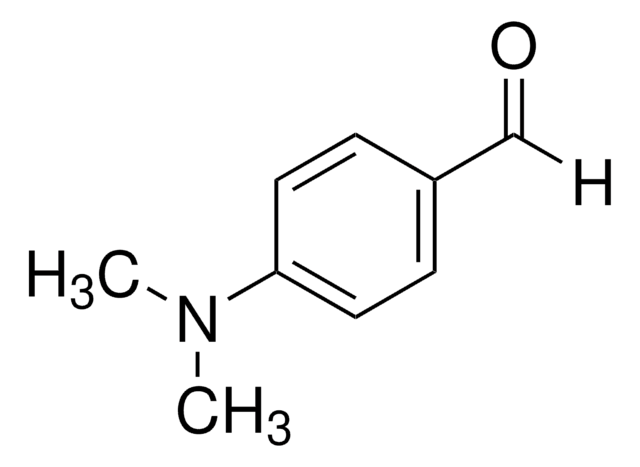70439
Oxidase Test disks
suitable for agriculture, clinical testing, environmental, food and beverages pharmaceutical, microbiology and specific enzyme detection
About This Item
Recommended Products
Product Name
Oxidase Test, suitable for microbiology
Agency
according to ISO 9308-1:2014
Quality Level
product line
BioChemika
shelf life
limited shelf life, expiry date on the label
technique(s)
microbe id | specific enzyme detection: suitable
antibiotic activity spectrum
Gram-negative bacteria
application(s)
agriculture
clinical testing
environmental
food and beverages
pharmaceutical
microbiology
storage temp.
2-8°C
suitability
Plesiomonas spp.
Aeromonas spp.
Neisseria spp.
Pseudomonas spp.
bacteria
Application
Packaging
Principle
Storage Class Code
11 - Combustible Solids
WGK
WGK 3
Flash Point(F)
Not applicable
Flash Point(C)
Not applicable
Personal Protective Equipment
Choose from one of the most recent versions:
Already Own This Product?
Find documentation for the products that you have recently purchased in the Document Library.
Customers Also Viewed
Articles
Vibrio Detection
On the Trail of Campylobacter
Chromogenic media enable the selective detection of S. aureus, which produce bluish-green colonies that are clearly differentiated from other species.
For microbiologists the most fundamental stain was developed in 1884 by the Danish bacteriologist Hans Christian Gram.
Protocols
General guidance for the detection and enumeration of Enterobacteriaceae in food according to EN-ISO 8523:1991 and EN-ISO 4832:1991, respectively.
Our team of scientists has experience in all areas of research including Life Science, Material Science, Chemical Synthesis, Chromatography, Analytical and many others.
Contact Technical Service
